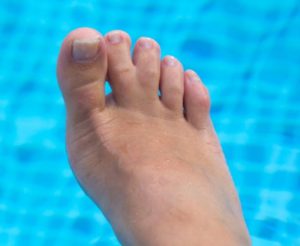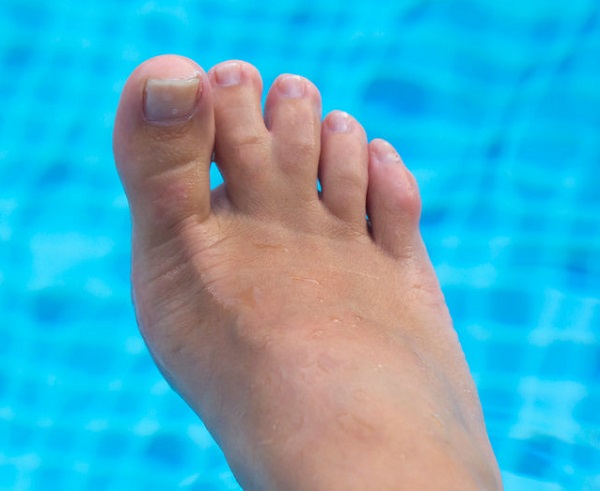Are Webbed Toes Bad?
Unless you aspire to be the next Aquaman, having webbed toes is more of a potential embarrassment than anything else. It usually doesn’t affect normal foot function. However, having webbed toes – a condition known medically as syndactyly – might lead to some strange looks from others.
What are Webbed Toes?
If you are picturing webbed toes looking something like the feet of ducks or swans, you’ll need to reset your focus. It is not a case of having flaps of skin in between your toes. It’s more like two toes being seamlessly fused together with a skin wrap-around.
There are two types of webbed toes – partially fused and total fused. Partial fusion is where the toes are seamlessly joined at the base but then separate near the tips. Full fusion is where the toes in question are seamlessly joined from base to tip. Webbed toes normally affect two toes, but in rare cases, may include more. Syndactyly can be described as:
- Unilateral – only affecting one side of the body
- Bilateral – affecting both sides of the body
- Symmetrical – relating to the same toes on both sides
- Asymmetrical – relating to different toes on either side of the body
Whereas two webbed toes do not affect everyday foot function, the more toes that are conjoined, the greater the risk of interfering with normal foot movement.
What Causes Webbed Toes?
We all have webbed toes as embryos. In the early phase of fetal development, the five digits on both your hands and feet are all connected via soft tissue. But around six to eight weeks following conception, a certain enzyme is produced that gently dissolves this joining tissue. The result is that the toes and fingers become separate digits. But, it doesn’t always happen.
In more rare cases, the physicality of syndactyly can include other body parts such as bones, blood vessels, muscles and nerves.
Syndactyly is relatively rare – approximately one baby in every 2,500. But when you look at the size of various populations, it does mean that if you have webbed toes, you are far from alone.
When it does occur, it is sometimes a condition that is handed down through genetics. It can also be an indicator of other much rarer diseases such as Crouzon syndrome and Apert syndrome. Thankfully the incidence rate of such conditions is far lower, say around one in every 16 million births.
Another association of webbed toes (or fingers) is Down Syndrome. When syndactyly is noticed at birth, it usually triggers an automatic Down Syndrome investigation.
The Different Types of Webbed Toes
When webbed toes occur, it is usually the second and third toes that are involved. As well as its medical name of “syndactyly,” webbed toes are sometimes referred to as duck, tiger, turkey, or twin toes.
In the majority of cases of syndactyly, the joining or fusion is one of soft tissue only- cutaneous connection. However, in some cases, it is the bones also that are fused – osseous connection.
Do webbed toes cause other toe problems?
Occasionally people with webbed toes develop clawed or hammered toes. In these cases the toes draw back and the joints become more prominent, uncomfortable and unsightly. Generally this is thought to be unrelated to the webbed toes but more related to footwear issues and tendon shortening.
Separation or De-Syndactlyl Surgery
The only treatment for webbed toes is separation or de-syndactyly surgery. This type of surgery is best carried out when the child in question is aged between 12 and 18 months, i.e. before full development. However, some parents may wait until the child in question can decide for itself. It is very much a personal choice, but generally speaking, the earlier the decision is made, the easier and less traumatic the experience for the patient.
Surgery is usually carried out under a general aesthetic. It is another reason for carrying out the procedure at an early age, as any risks from anesthetic are significantly lower. During the procedure, the webbed skin between the toes is cut evenly in a Z shape. It might be possible that extra skin tissue is required to fully cover the separated digits. If this is necessary, a skin graft is normally taken from the upper arm or leg. If the patient has a more complex case of syndactyly which involves the fusing of bones, cartridge, muscle and nerve endings, the procedure will take significantly longer.
This type of surgical procedure is very safe and has a very high success rate.
After the Surgery
After the surgery, the patient’s newly separated toes will be covered in a cast that stays on for two or three weeks. The cast is then removed, and a brace fitted. In many instances, rubber “plugs” might be used to keep the digits separated during sleep.
As healing progresses, the patient will attend regular appointments with a doctor to keep an eye on progress. They will also undergo physical therapy in order to alleviate any stiffness and to facilitate normal movement.
Webbed Toes are not bad – but
From a physical viewpoint having webbed toes is not a disability. Most people enjoy fully functional movement. Some people don’t even notice, especially if others in the family have feet or hands that look the same. For others, the only “danger” is the aesthetics and possible loss of self-esteem, particularly for women who wish to wear open-toed footwear. De-syndactyly surgery is available but not always necessary.

